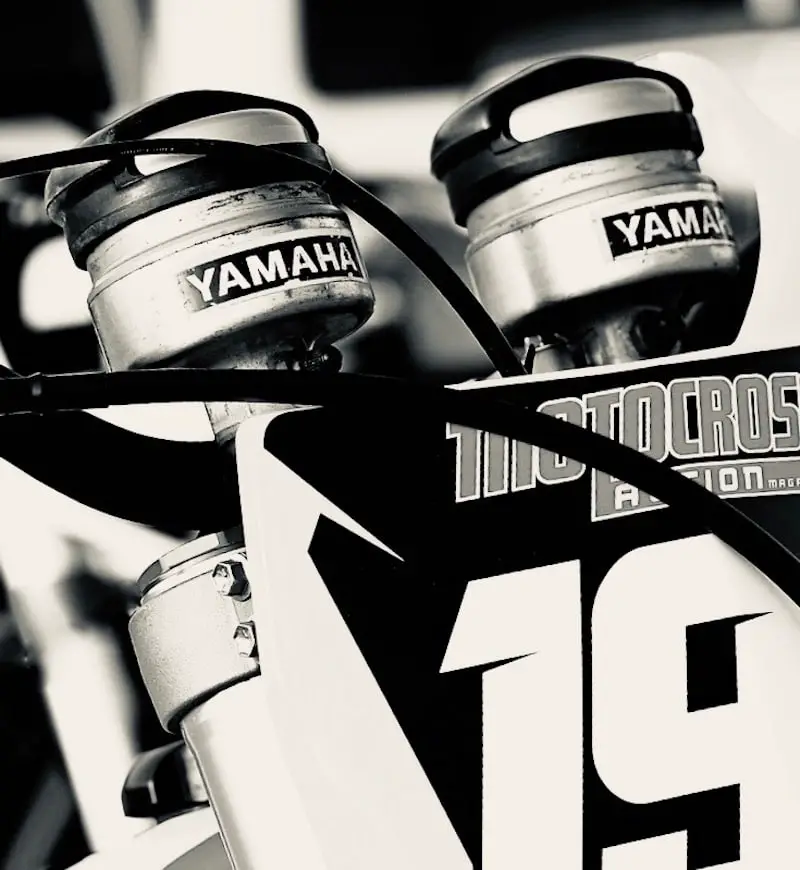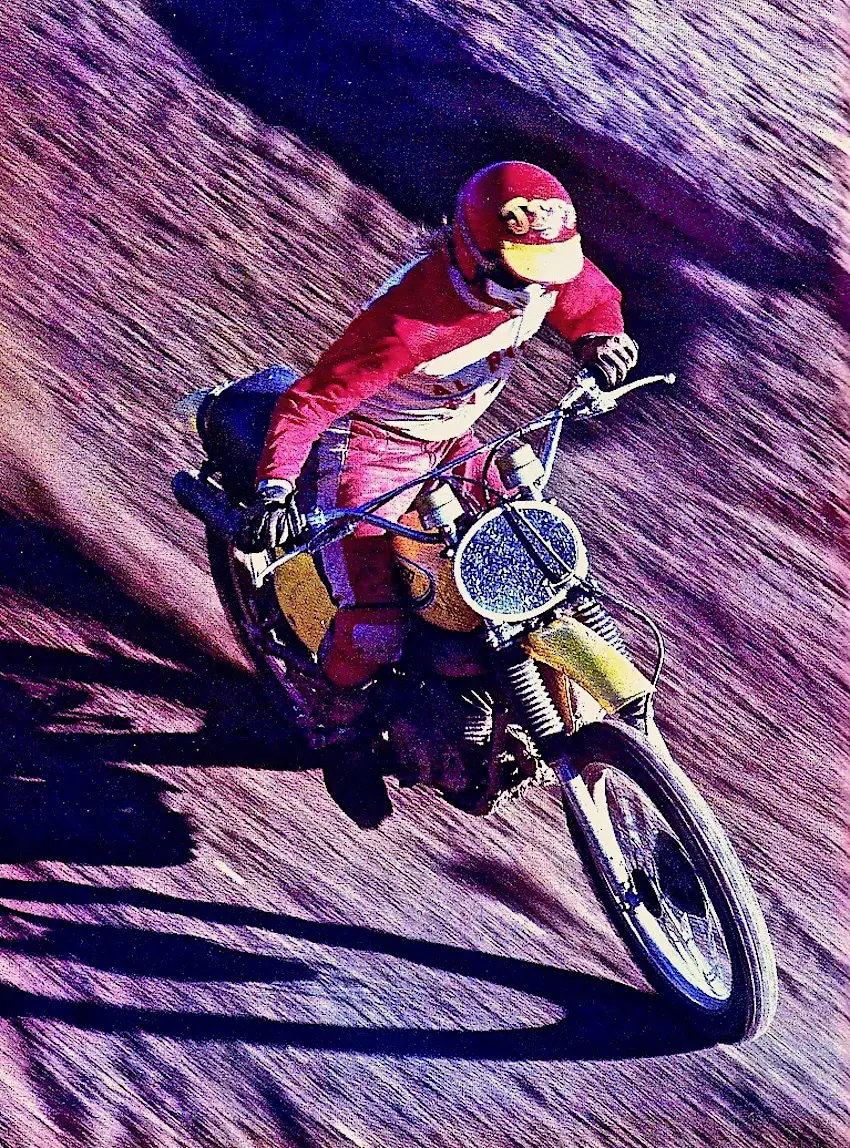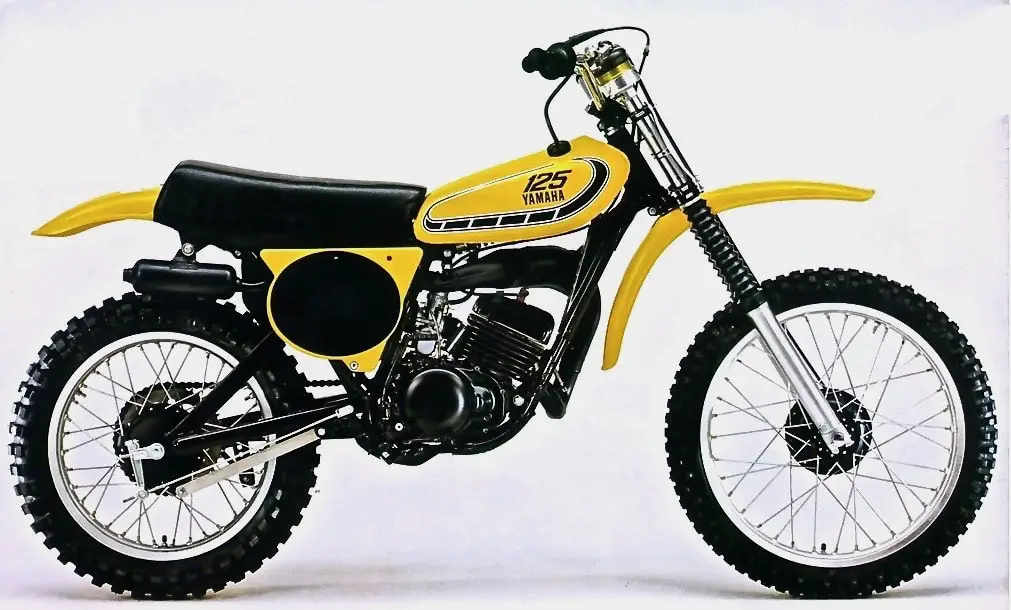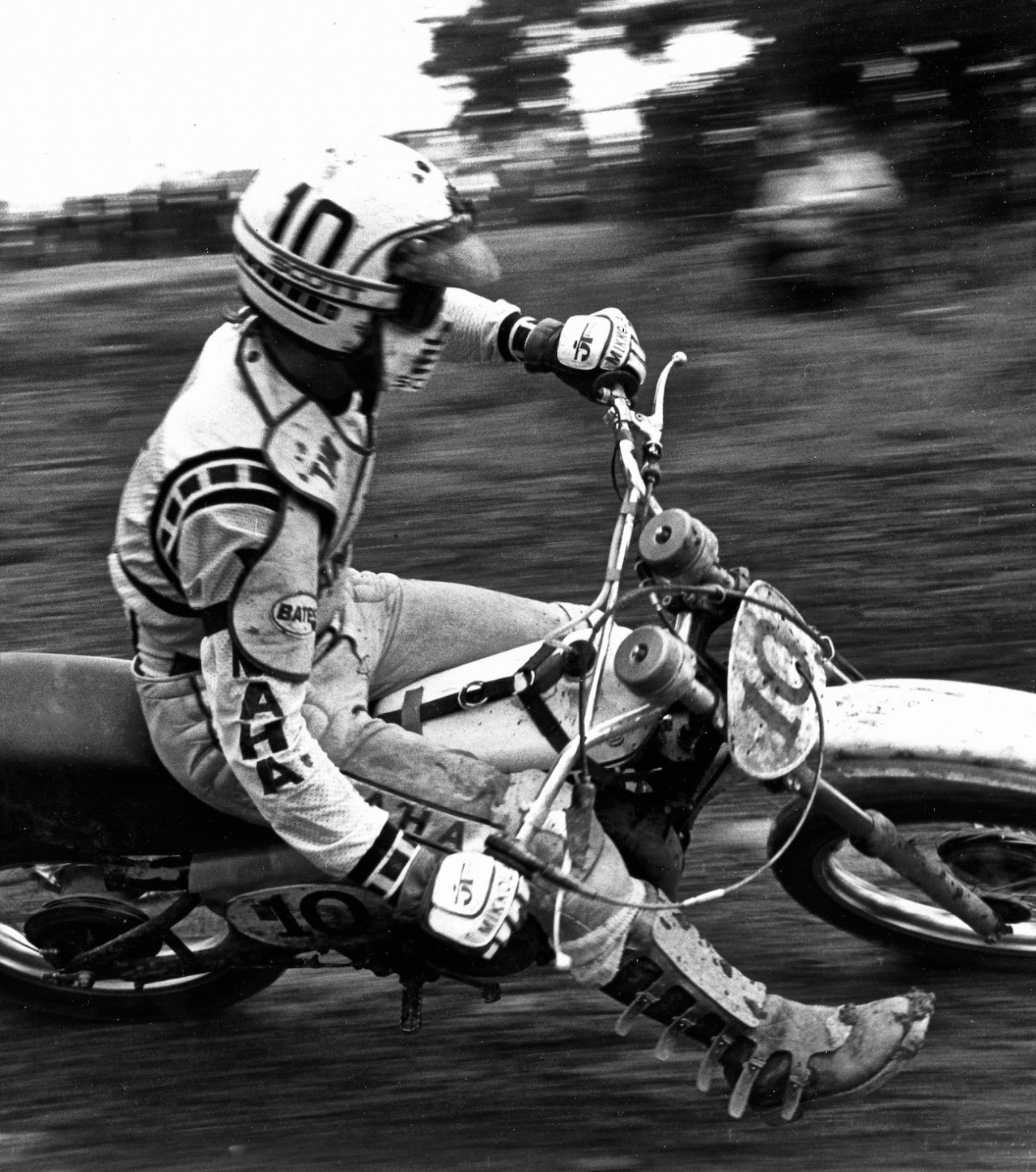FORGOTTEN MOTOCROSS TECH: WHAT WERE SPEEDO & TACH FORKS?
 The exposed canisters are evident in this photo of Jody Weisel at Saddleback Park in 1976 on a YZ400. The air wasn’t the major problem with the 1976 Yamaha forks, it was the valving.
The exposed canisters are evident in this photo of Jody Weisel at Saddleback Park in 1976 on a YZ400. The air wasn’t the major problem with the 1976 Yamaha forks, it was the valving.
Motocross history is filled with examples of creative ideas that were heralded as groundbreaking, but, because of the rapid rate of change in development, many sank into the swamp of forgotten technology. Although some are best left abandoned, others were truly innovative (if not ultimately successful). MXA reveals motocross’ tech trivia. Do you remember this idea? Yamaha’s 1976 Speedo & Tach air forks.
 After Yamaha got a lot of complaints about the Shraeder Valves sticking out of the top of the canisters, they put rubber covers on them to keep the air valves from being imbedded in a rider’s chest.
After Yamaha got a lot of complaints about the Shraeder Valves sticking out of the top of the canisters, they put rubber covers on them to keep the air valves from being imbedded in a rider’s chest.
Air forks are nothing new in motocross, as the 1976 Yamaha’s 35mm Kayaba air forks prove. The dual air canisters resembled the instrument cluster of a street bike, leading to the forks being called “Speedo & Tach forks.” The design was incredibly creative. There were two Schrader valves on each canister—one below a floating piston and one above it. The two separate air pressures served as a dual-rate fork spring.
 The each canister had a floating piston inside that was supported by the low air pressure below it and made stiffer by the high air pressure above it. For 1976 the Kayaba design was very inventive. Jeff Blix demonstrates.
The each canister had a floating piston inside that was supported by the low air pressure below it and made stiffer by the high air pressure above it. For 1976 the Kayaba design was very inventive. Jeff Blix demonstrates.
The trick was to put just enough air pressure in the lower air valve to hold the forks at the proper ride height (they would stiffen as the air was compressed by upward movement). The upper air valve fed the high-pressure side and, as the fork moved through its stroke, the air pressure in the lower chamber pushed the floating piston upward which reduced the volume thus increasing the pressure inside the canister. The goal was to have plush forks for small to mid-sized bumps and additional bottoming resistance.
 The 1976 YZ125 (above), YZ250 and YZ400 all came with Speedo & Tach forks.
The 1976 YZ125 (above), YZ250 and YZ400 all came with Speedo & Tach forks.
 Even the factory Yamaha team ran Speedo & Tach forks—as Tim Hart demonstrates.
Even the factory Yamaha team ran Speedo & Tach forks—as Tim Hart demonstrates.
MXA ran 27 psi in the low-pressure side and 50 psi in the high-pressure side. While the idea was innovative, the forks were doomed to failure because their valving was atrocious and they tended to top out on the rebound stroke. Kayaba’s air forks were dropped after one year, only to come back 40 years later. And then get dropped again!






Comments are closed.